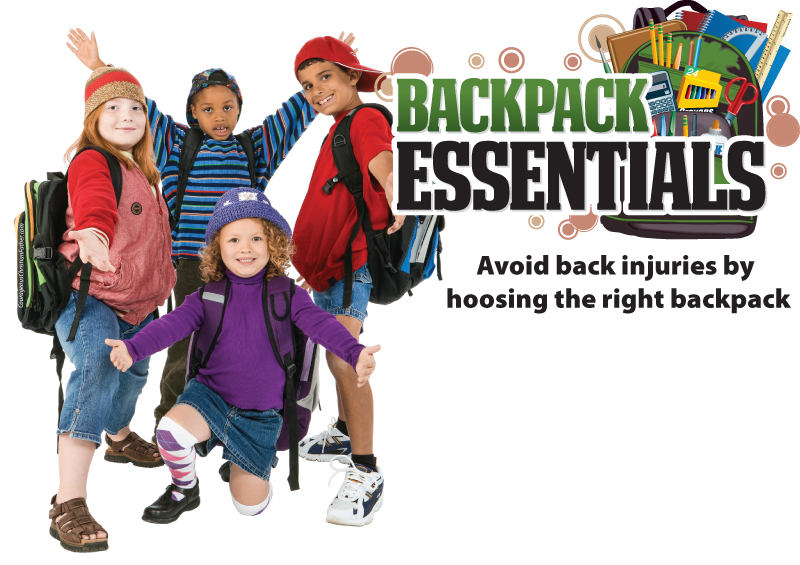Backpack Essentials – Avoid back injuries by choosing the right backpack. Finding the right backpack is an essential component of back-to-school shopping. Children may have their own ideas of what’s in style, but parents should look for backpacks that are functional before factoring in style. Marrying form and function together can be challenging, but it’s necessary to prevent students from developing back problems.
Back to School means school supplies such as backpacks. Here are some essential backpack tips to help with that school supply shopping.
Finding the right backpack is an essential component of back-to-school shopping. Children may have their own ideas of what’s in style, but parents should look for backpacks that are functional before factoring in style. Marrying form and function together can be challenging, but it’s necessary to prevent students from developing back problems. But parents must give consideration to more than just the size of their children’s backpacks.

Depending on school schedules, students may be carrying backpacks for up to 10 hours per day, five days per week. Backpacks may be filled with several pounds of stuff, such as textbooks, binders, laptops, and other supplies, potentially leading to injury.
According to the U.S. Consumer Product Safety Commission, at least 14,000 children are treated for backpack-related injuries every year. The American Academy of Orthopedic Surgeons says that the weight of a backpack should not exceed 10 to 15 percent of a child’s body weight. But many students pack their bags with much more weight than that.
Improperly sized, worn and overstuffed backpacks can injure joints and lead to neck, back and shoulder injuries. They also may affect children’s posture. Check out this list of Backpack Essential Tips.
- Choose a streamlined model. Select a backpack that will get the job done without much added bulk. Many backpacks have been designed to hold technological devices as more and more schools integrate technology into the classroom. A less bulky bag might be lighter and easy to carry.
- Consider shopping at a sporting goods store. Employees at camping and sporting goods retailers understand how to fit backpacks for hikers and outdoor adventurers. They can help measure a student and find a pack that will fit his or her body frame. Also, these retailers may have a wider selection of backpacks than some other stores, increasing the chances of finding the right fit.
- Select a pack with a waist strap. According to the American Chiropractic Association, the body is not designed to carry items hanging from shoulders. By using the waist strap in conjunction with taut shoulder straps, students can distribute the weight in their backpacks over their hip bones instead of the shoulders. The padded and adjustable shoulder straps should be at least two inches wide. All straps should be used each time the pack is worn.
- Backpacks should be loaded properly. Heavy items should be near the center bottom to distribute the load, rather than placed on top. Students should only carry what is necessary, visiting lockers or desks as needed to lighten their packs.
Backpack fit and functionality is something parents should take seriously when shopping for school supplies.
Article compliments of MetroCreative. BS177117
First published August 8, 2018. Last updated or republished July 31, 2019.
About the Author
Discover more from Courageous Christian Father
Subscribe to get the latest posts sent to your email.


